There’s sumthing undeniably magical about stepping into a cottage living room. The warm embrace of soft textures, the gentle glow of ambient lighting, and the thoughtful arrangement of furniture that seems to whisper “come, sit awhile” – these elements create spaces that aren’t just visually appealing but emotionally resonant. Whether you live in an actual countryside cottage or simply yearn to bring that cozy, collected-over-time feel into your urban apartment, cottage style offers a respite from the cold minimalism that has dominated interior design trends in recent years.
Research by the American Society of Interior Designers shows that 78% of homeowners prioritize “comfort and coziness” when redesigning living spaces, with cottage-inspired elements consistently ranking among the top desired features. This return to warmth isn’t simply aesthetic; it reflects our deeper human need for spaces that nurture connection and well-being.
In this comprehensive guide, we’ll explore 22 inspiring cottage living room ideas that balance timeless charm with practical functionality. Whether you’re planning a complete renovation or just looking for weekend refresh ideas, these approaches will help transform your living room into a sanctuary that feels both curated and comfortable.
I. Foundation Elements of Cottage Style
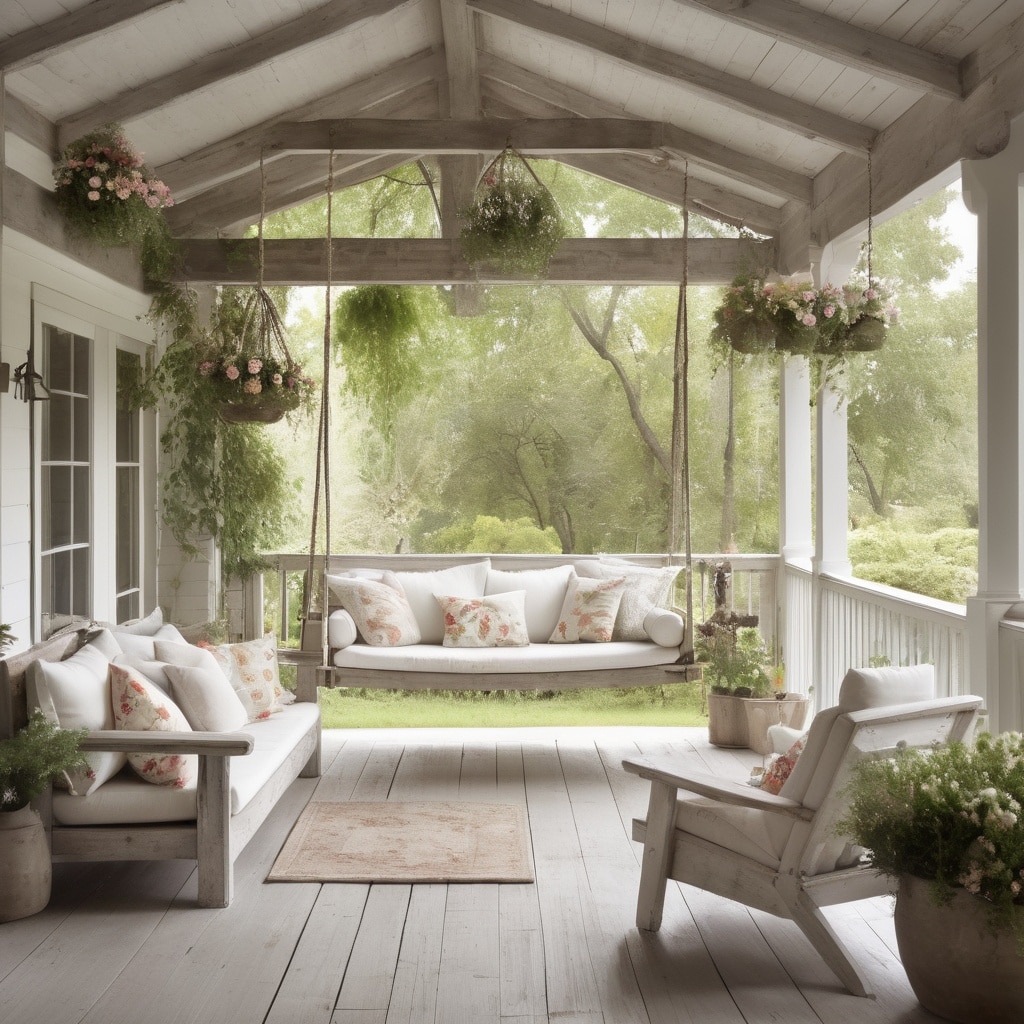
The soul of cottage style lives in its foundation elements – the colors, materials, and architectural details that set the stage for everything else. Let’s start with the essential building blocks.
A. Finding Your Cottage Color Palette
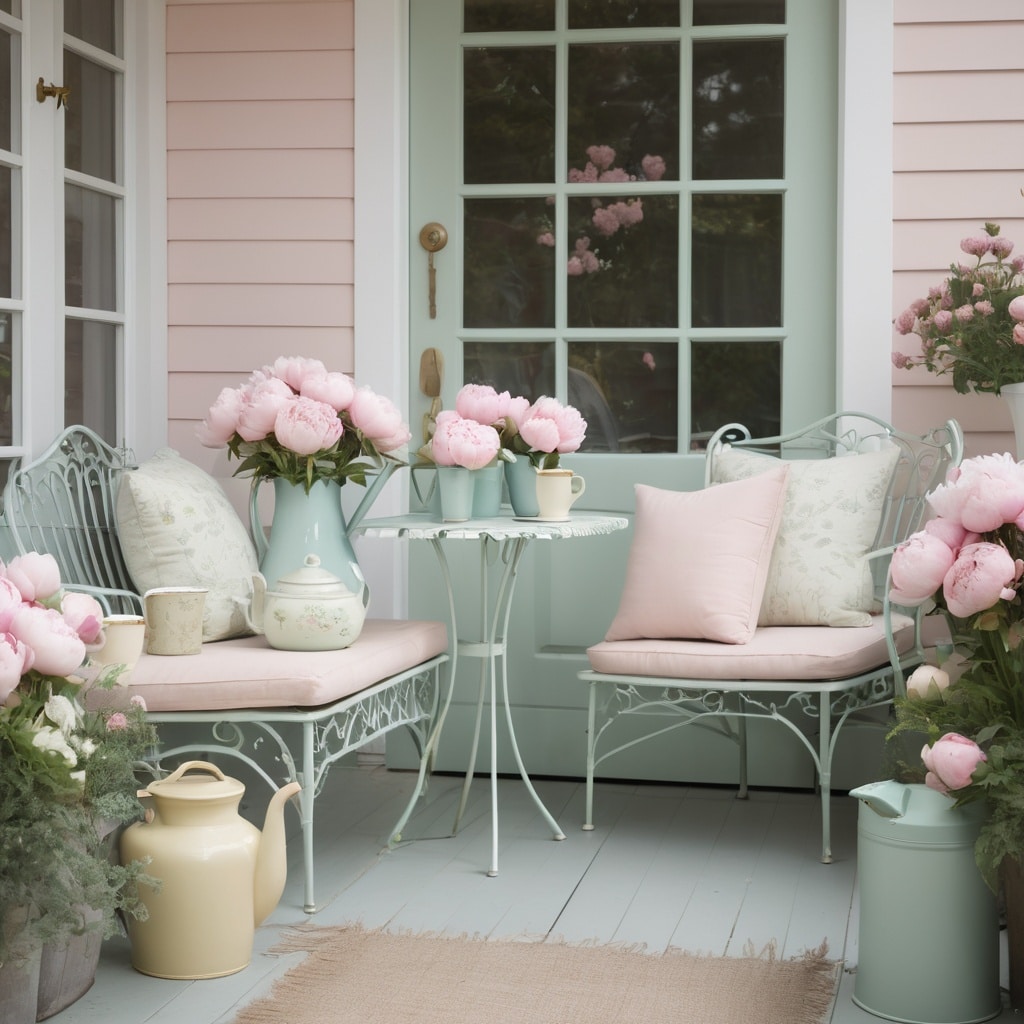
Walk into any cottage-inspired space, and you’ll notice the colors aren’t shouting for attention – they’re harmonizing in a way that feels both calming and welcoming. But this doesn’t mean your only options are beige and white.
“Cottage color palettes should feel like they’ve evolved naturally over time rather than being selected from a color wheel,” explains interior designer Sarah Richardson, whose cottage renovations have been featured on HGTV. “Think of the colors you’d find in a garden, or on a countryside walk – soft greens, buttery yellows, muted blues.”
When creating your own cottage palette:
- Start with a neutral base: Warm whites, creamy off-whites, and soft grays provide versatility and brightness
- Layer in muted midtones: Sage green, dusty blue, or pale terracotta can add depth without overwhelming
- Use saturated colors sparingly: Navy, forest green, or burgundy work beautifully as accents in pillows, artwork, or small furniture pieces
One often-overlooked approach is to sample colors in different lighting conditions. A paint color that looks perfect at noon might feel too cold by lamplight. Designer Leanne Ford recommends testing colors on different walls, as “north-facing rooms will make colors appear cooler, while south-facing rooms warm them up.”
Regional variations can also inform your palette choice. English cottage style typically embraces floral-inspired hues and muted pastels, while American farmhouse cottage often incorporates more primary colors and weathered finishes. French cottage style tends toward soft blues, warm yellows, and cream tones inspired by the Provençal countryside.
B. Natural Materials as the Cottage Cornerstone
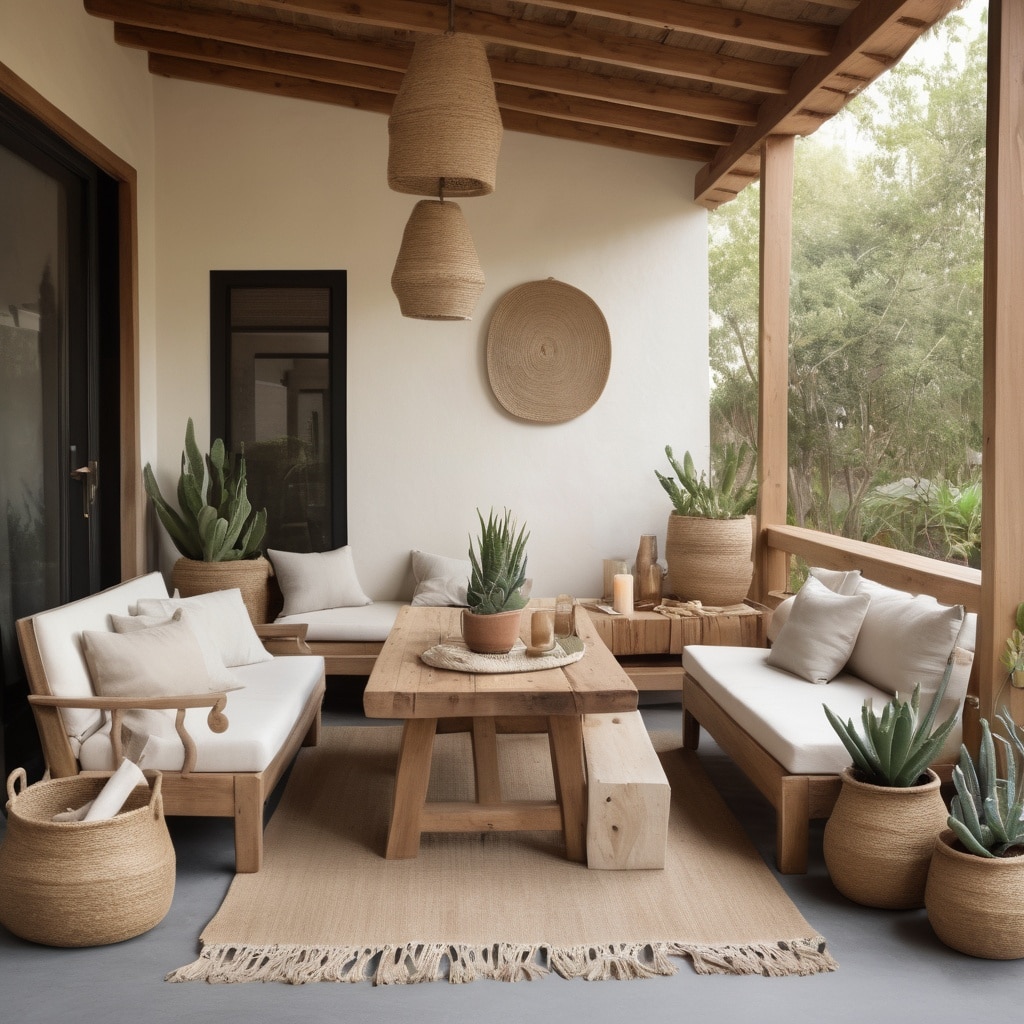
Nothing says “cottage” quite like the authentic character of natural materials. The knots in pine floorboards, the rough texture of exposed stone, or the organic weave of a jute rug all contribute to that lived-in, collected-over-time feeling that defines cottage style.
Wood is perhaps the most essential material in cottage design. Oak, with its prominent grain and durability, has been a staple in cottage construction for centuries. Pine offers a softer, knotty appearance that patinas beautifully with age. For modern interpretations, reclaimed wood brings instant character – each scratch and worn edge telling a story of previous lives.
When incorporating wood elements:
- Mix wood tones thoughtfully – aim for complementary undertones rather than exact matches
- Balance heavier wooden pieces with lighter textiles
- Consider unexpected applications like wood ceilings or built-in window seats
Stone elements create instant architectural interest. A original stone fireplace serves as a natural focal point, but you don’t need period architecture to incorporate this material. Veneer stone panels can create convincing accent walls, while smaller stone elements like bookends or decorative bowls add textural interest.
For those on a budget, natural materials can still be accessible. Interior designer Emily Henderson suggests: “Look for composite materials that mimic the look of natural wood or stone but offer greater durability and lower price points. Many are virtually indistinguishable from the real thing.”
II. Furniture Selection for Authentic Cottage Feel
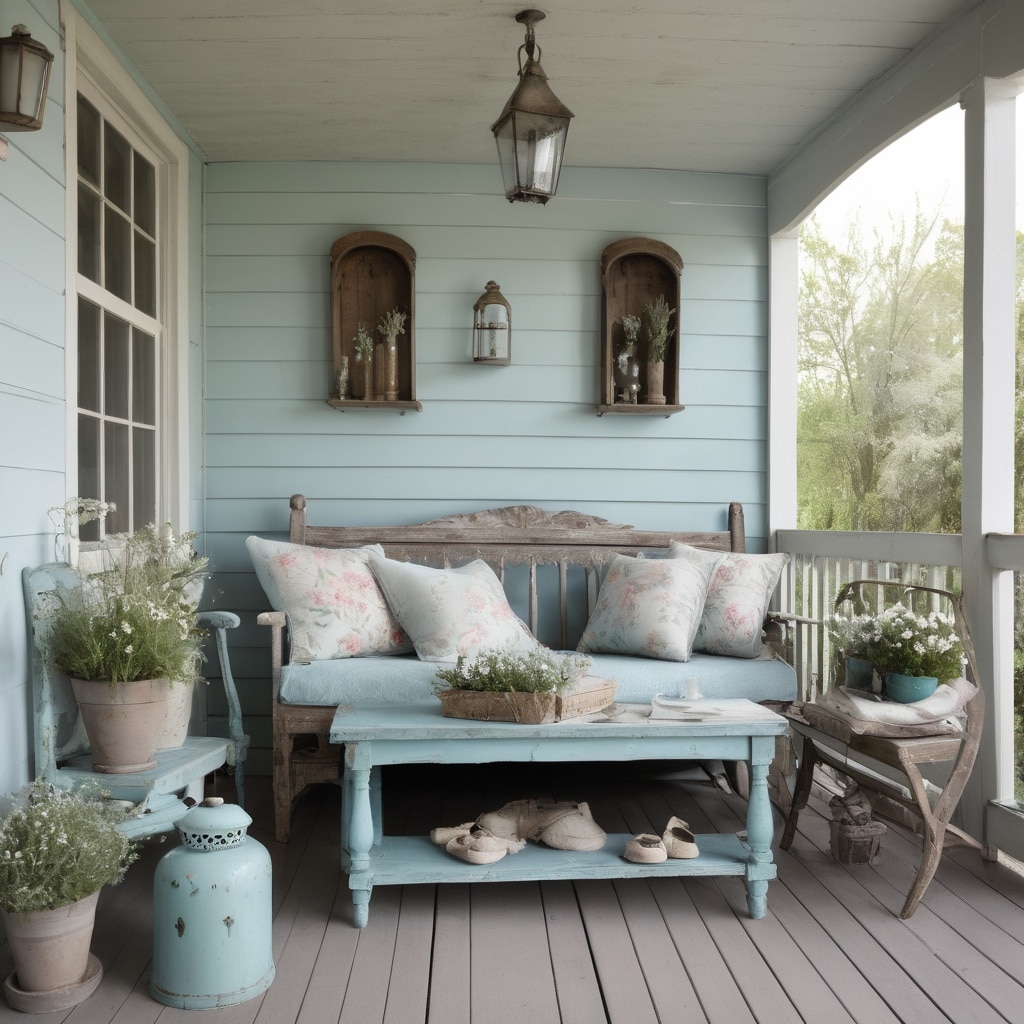
The right furniture choices can instantly transform a generic space into a cottage haven. Unlike more formal decorating styles, cottage furniture should invite relaxation and convey a sense of history.
A. The Perfect Cottage Sofa
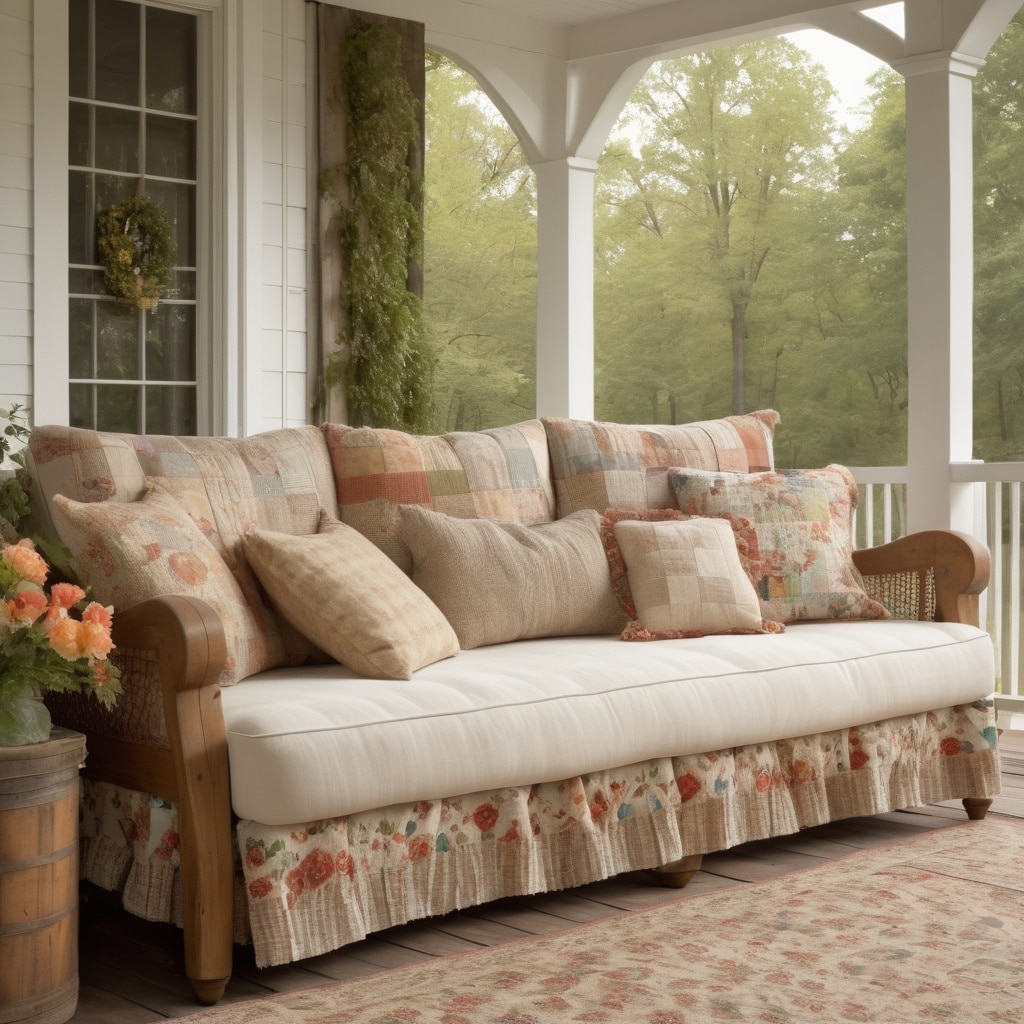
The sofa anchors your living room and sets the tone for the entire space. In cottage design, comfort reigns supreme, but that doesn’t mean sacrificing style.
“The ideal cottage sofa has soft, rounded edges rather than sharp angles,” notes furniture designer Rachel Ashwell, founder of Shabby Chic. “It should look like something you could sink into at the end of a long day.”
When choosing a cottage-style sofa:
- Prioritize deep seats with ample cushioning
- Consider washable slipcovers in natural fabrics like cotton or linen (particularly practical for homes with children or pets)
- Look for details like rolled arms, skirted bottoms, or tufted backs that reference traditional upholstery techniques
- Choose muted, versatile colors that can transition through seasons and design evolutions
The arrangement of your seating is equally important. Traditional cottage layouts position sofas and chairs closer together than contemporary spaces, creating intimate conversation areas. A helpful rule of thumb: seating should be close enough that people can converse without raising their voices, typically no more than 8 feet apart.
Designer tip: “If your room allows, float the sofa away from the wall to create a more intimate seating area,” suggests cottage style expert Nora Murphy. “Even just a few inches can make a difference in how the space feels.”
B. Vintage Furniture Integration

Nothing captures the essence of cottage style better than furniture with history. Vintage pieces bring instant character and often superior craftsmanship compared to mass-produced modern alternatives.
When searching for vintage pieces:
- Look for solid wood construction – dovetail joints, wooden drawer glides, and other marks of quality craftsmanship
- Don’t be deterred by superficial damage – minor scratches and worn finishes add to the cottage charm
- Mix periods thoughtfully – aim for a collected-over-time look rather than a perfect matching set
- Consider scale carefully – many vintage pieces were designed for smaller rooms than today’s open floor plans
“The best cottage rooms tell a story through their furniture,” explains interior designer Max Humphrey, author of “Modern Americana.” “Each piece should feel like it has its own history and reason for being there.”
For those new to vintage shopping, start with smaller accent pieces like side tables, stools, or bookshelves. These lower-commitment items let you experiment with different woods, finishes, and styles before investing in larger statement pieces.
One caution: avoid turning your cottage living room into a museum. Mix vintage finds with contemporary comfort pieces for a space that feels collected rather than contrived.
Read This Blog: https://hometranquil.com/hallway-wall-decor/
III. Textural Elements that Create Dimension
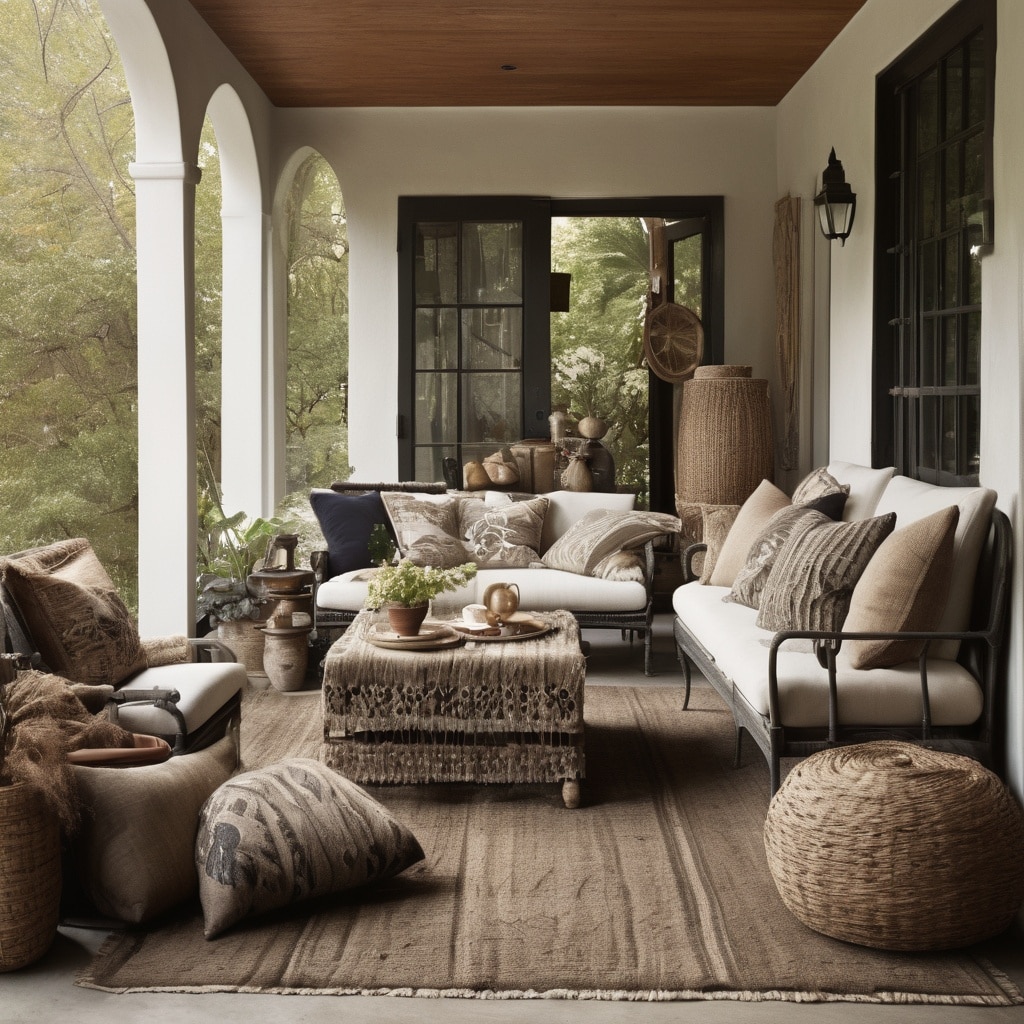
Texture is where cottage design truly comes alive, creating visual interest and tactile comfort in equal measure. In fact, a Michigan State University study found that spaces with varied textures were rated as significantly more “inviting” and “comfortable” by participants than those with minimal textural variation.
A. Layering Textiles for Depth
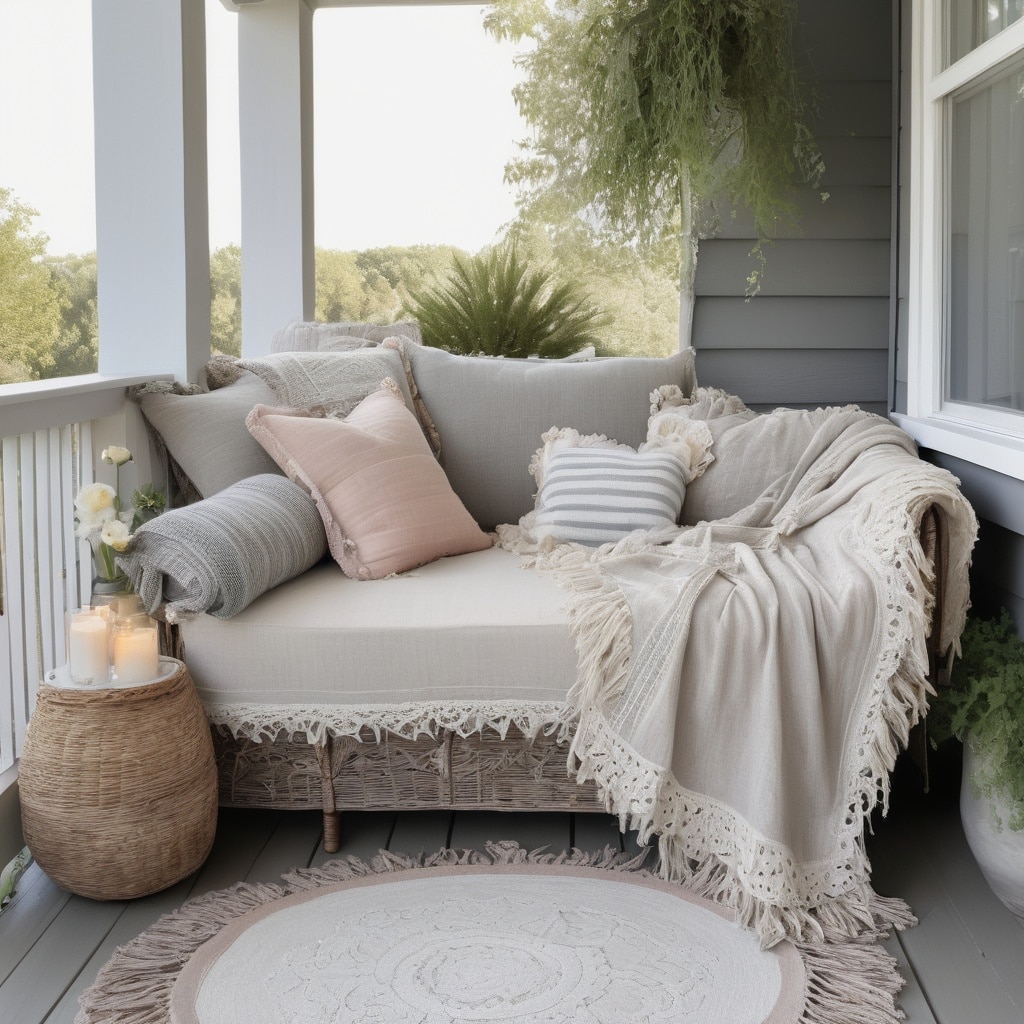
Textile layering is an art form in cottage decorating, transforming even the simplest furniture into inviting focal points. The secret lies in thoughtful combination rather than sheer quantity.
Successful textile layering follows the “rule of three” – combining at least three different textures or materials to create visual interest. For example:
- A linen sofa base
- Topped with cotton velvet cushions
- Finished with a chunky knit throw
Designer Jenni Kayne, known for her California-inspired cottage style, suggests: “Always include something soft, something nubby, and something smooth in your textile mix. The contrast creates depth that feels both intentional and effortlessly elegant.”
When selecting patterns, cottage style traditionally embraces:
- Florals (from delicate chintz to bolder botanical prints)
- Checks and ginghams in various scales
- Simple stripes
- Toile for a French cottage influence
The key to successful pattern mixing is variation in scale. Pair smaller, busier patterns with larger, simpler ones to create balance. For example, small floral cushions might complement a wider stripe on an upholstered chair.
Seasonal rotation of textiles not only freshens your space but is practically built into cottage tradition. Lighter linens and cottons in summer give way to heavier wools and velvets in winter, creating natural variety throughout the year.
B. Wall Treatments with Character

Plain painted walls rarely capture true cottage charm. Textured wall treatments add dimension and architectural interest that elevates the entire space.
Shiplap – horizontal wooden boards with slight gaps between them – has become synonymous with modern cottage style. While traditionally installed horizontally, vertical application can visually raise ceiling heights in smaller rooms. For authentic character, designer Leanne Ford recommends: “Use real wood when possible, and don’t make the boards too perfect – slight variations in width add to the handmade quality.”
Exposed brick brings instant texture and historical reference. While original brick is ideal, convincing veneer options have improved dramatically in recent years. For a softer look, whitewashing brick with a semi-transparent paint allows the natural variation to show through while brightening the space.
For budget-conscious decorators, beadboard provides classic cottage texture at a fraction of the cost of some other treatments. Traditionally installed as wainscoting (covering the lower portion of walls), beadboard can also work as a full wall treatment or even on ceilings in smaller spaces.
Even simple painted walls can gain textural interest through techniques like:
- Color washing (applying a translucent glaze over base paint)
- Dry brushing (using a nearly-dry brush to create subtle texture)
- Lime washing (creating a matte, chalky finish with natural variation)
Remember that in cottage style, perfection isn’t the goal – character is.
IV. Architectural Details that Define Cottage Style

Architectural elements provide the framework that makes cottage style instantly recognizable. Even in newer homes lacking original character, thoughtfully added architectural details can create convincing cottage charm.
A. Wooden Beam Integration

Few elements transform a space as dramatically as exposed wooden beams. Beyond their visual impact, beams create a sense of history and craftsmanship that’s central to cottage design.
When considering beams for your cottage living room:
- Scale appropriately – wider, heavier beams work in rooms with higher ceilings (9+ feet), while narrower beams suit standard ceiling heights
- Consider placement carefully – traditional cottage homes typically feature beams that follow the natural structure of the house
- Choose authentic finishes – heavily distressed or artificially aged beams often look less convincing than those with subtle patina
- Explore different arrangements – beyond parallel ceiling beams, consider cross beams, singular feature beams, or decorative corner braces
Real wooden beams add authentic character but present installation challenges, often requiring structural reinforcement. Faux beams offer a lightweight alternative that’s both easier to install and more budget-friendly. Modern faux options crafted from high-density polyurethane can be remarkably convincing, especially when selected in appropriate dimensions and finishes.
“The key to successful beam installation is making them look structural, even when they’re not,” explains contractor and cottage renovation specialist Tamara Day. “They should appear to be supporting something, even if they’re purely decorative.”
B. Window Treatments that Frame the View

Cottage windows traditionally lean toward simplicity, emphasizing the connection between indoors and outdoors while maintaining privacy and light control.
Classic cottage window treatments include:
- Cafe curtains that cover only the lower portion of windows, allowing light through the top
- Simple side panels that frame rather than completely cover windows
- Roman shades in natural fabrics like linen or cotton
- Interior shutters that can be adjusted for varying degrees of light and privacy
When choosing window treatments, material matters as much as style. Natural fibers like linen, cotton, and bamboo align with cottage authenticity. Heavier fabrics like velvet or damask typically feel too formal for true cottage style.
For an authentic touch, designer Lauren Liess suggests mounting curtain rods 4-6 inches above the window frame and extending them 8-12 inches beyond the window’s width. “This approach makes windows appear larger and allows maximum light when curtains are open – both key elements in cottage design,” she explains.
V. Lighting Strategies for Cottage Ambiance

Lighting might be the most overlooked yet transformative element in cottage design. The right lighting creates not just visibility but atmosphere, turning a pleasant room into a magnetic space that draws people in.
A. Layered Lighting Approach
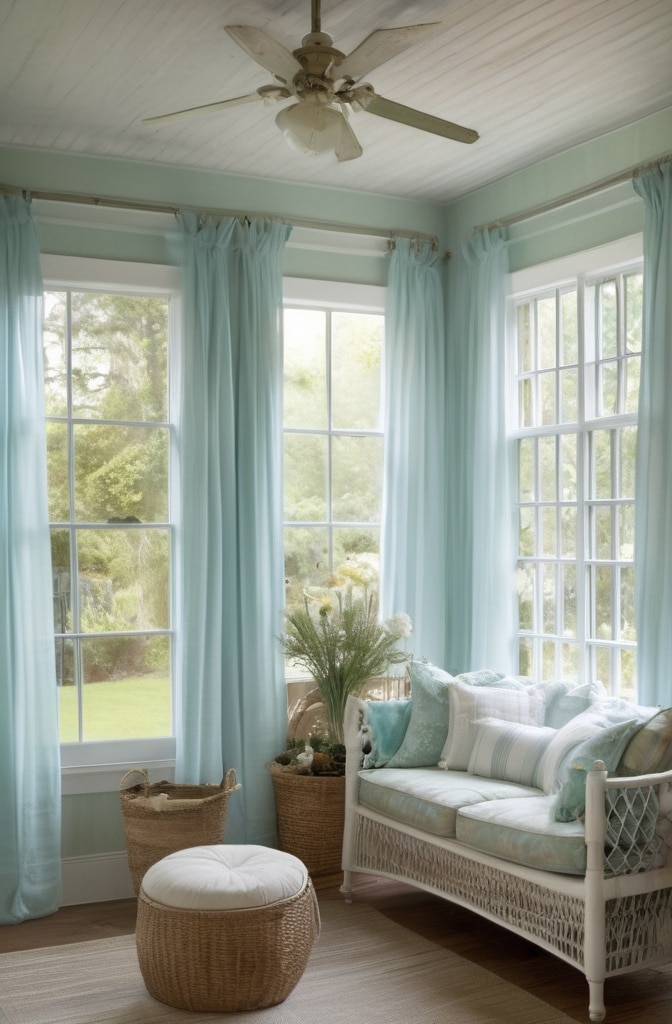
Cottage lighting relies on layering different light sources to create depth and flexibility. The ideal approach includes:
- Ambient lighting – overall illumination that allows safe movement through the space
- Task lighting – focused light for reading, crafting, or conversation
- Accent lighting – highlights for architectural features or decorative elements
Rather than relying on recessed ceiling lights (which often feel too contemporary for cottage style), consider:
- Table lamps with fabric shades that cast a warm glow
- Floor lamps positioned beside reading chairs
- Wall sconces that add mid-level light without consuming table space
- Picture lights that highlight art while providing ambient illumination
The quality of light matters as much as the fixtures themselves. “Warm white bulbs (2700-3000K) create the inviting atmosphere essential to cottage style,” notes lighting designer Julie Neill. “Cool white light instantly breaks the cozy spell, regardless of how perfect the rest of your decor may be.”
Dimmable options offer invaluable flexibility, allowing you to adjust light levels throughout the day and for different activities. Smart bulbs provide this functionality without requiring new wiring, making them ideal for rental properties or quick updates.
B. Strategic Placement for Maximum Coziness
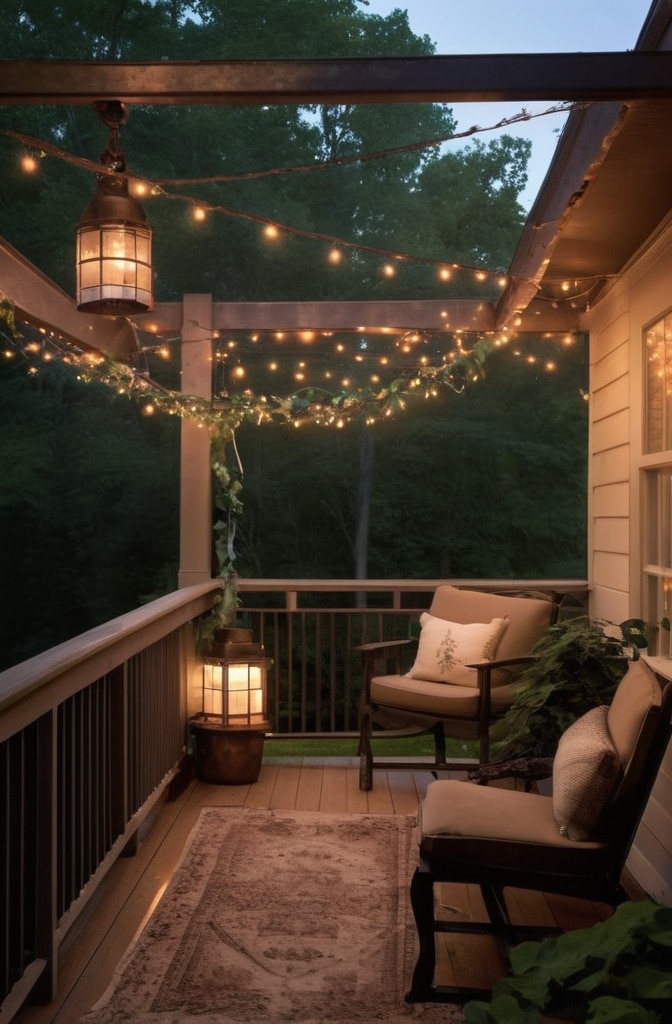
Beyond the fixtures themselves, placement dramatically impacts how a cottage living room feels. Traditional cottage lighting follows human scale rather than architectural symmetry.
Consider these placement strategies:
- Position reading lamps slightly behind seating rather than directly beside it to reduce glare
- Use pairs of matching lamps to create balanced focal points
- Place floor lamps in conversation areas where overhead lighting might be too harsh
- Create pools of light throughout the room rather than even illumination everywhere
Designer Steve Cordony suggests incorporating candlelight as an authentic cottage touch: “Even in homes with modern conveniences, the flickering glow of candlelight connects us to cottage traditions. Groupings of pillar candles on mantels or clustered in non-working fireplaces create instant atmosphere.”
For evening ambiance, consider string lights draped over beams or mantels – their twinkle creates a magical quality that complements cottage coziness.
VI. Storage Solutions with Cottage Character
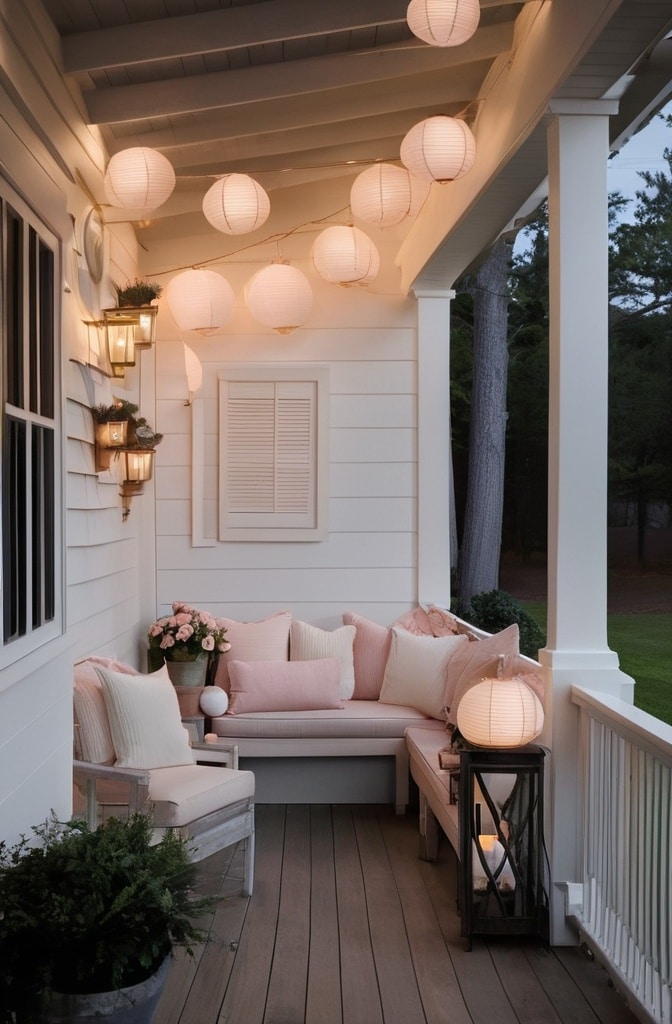
Clutter and cottage style are fundamentally incompatible, yet the active, lived-in nature of cottage living requires practical storage solutions. The best cottage storage blends functionality with decorative charm.
A. Basket Integration throughout the Space
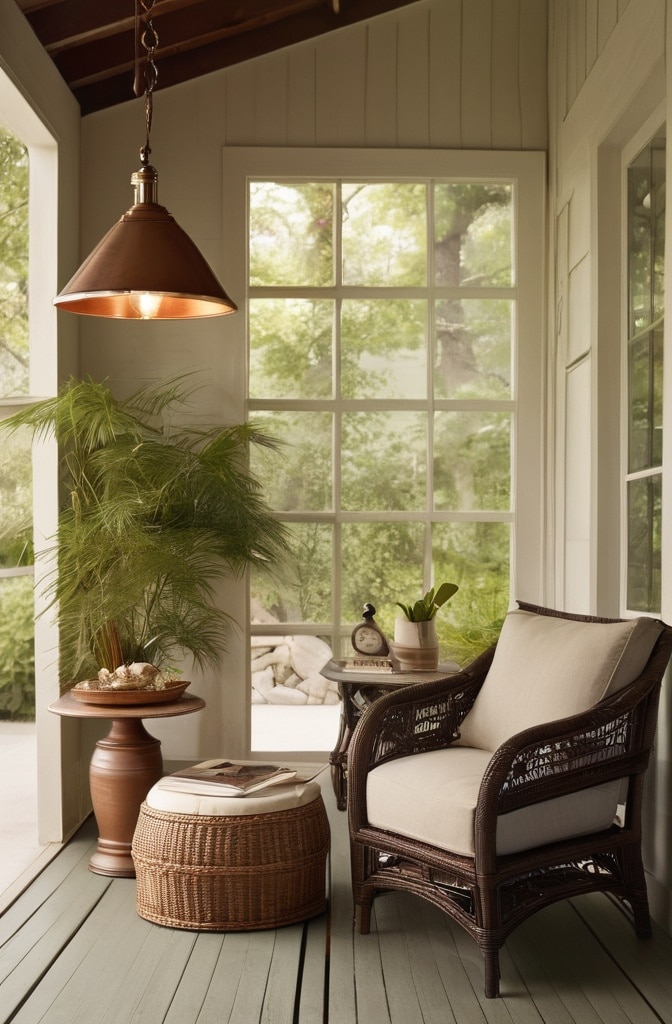
Baskets have been cottage storage workhorses for centuries, and for good reason. Their natural materials add texture while their forms follow function perfectly.
Strategic basket placement includes:
- Larger floor baskets beside sofas for throw blanket storage
- Medium handled baskets on shelves for corralling smaller items
- Small decorative baskets on coffee tables for remote controls and everyday essentials
- Wall-mounted basket systems for vertical storage that doubles as wall decor
The material and weave of your baskets contribute significantly to the overall aesthetic. Looser, more rustic weaves in natural rattan or seagrass align with casual cottage style, while tighter, more structured weaves in darker materials like water hyacinth bring a more refined feel.
Designer Emily Henderson recommends: “Choose baskets with similar materials or colors for cohesiveness, but vary their shapes and sizes for visual interest. Three identical baskets feel like basic storage; three complementary baskets feel intentionally curated.”
Beyond their practical function, baskets add important textural contrast to cottage spaces dominated by softer textiles. Their structure provides visual relief and necessary definition.
B. Built-In Solutions with Period Details
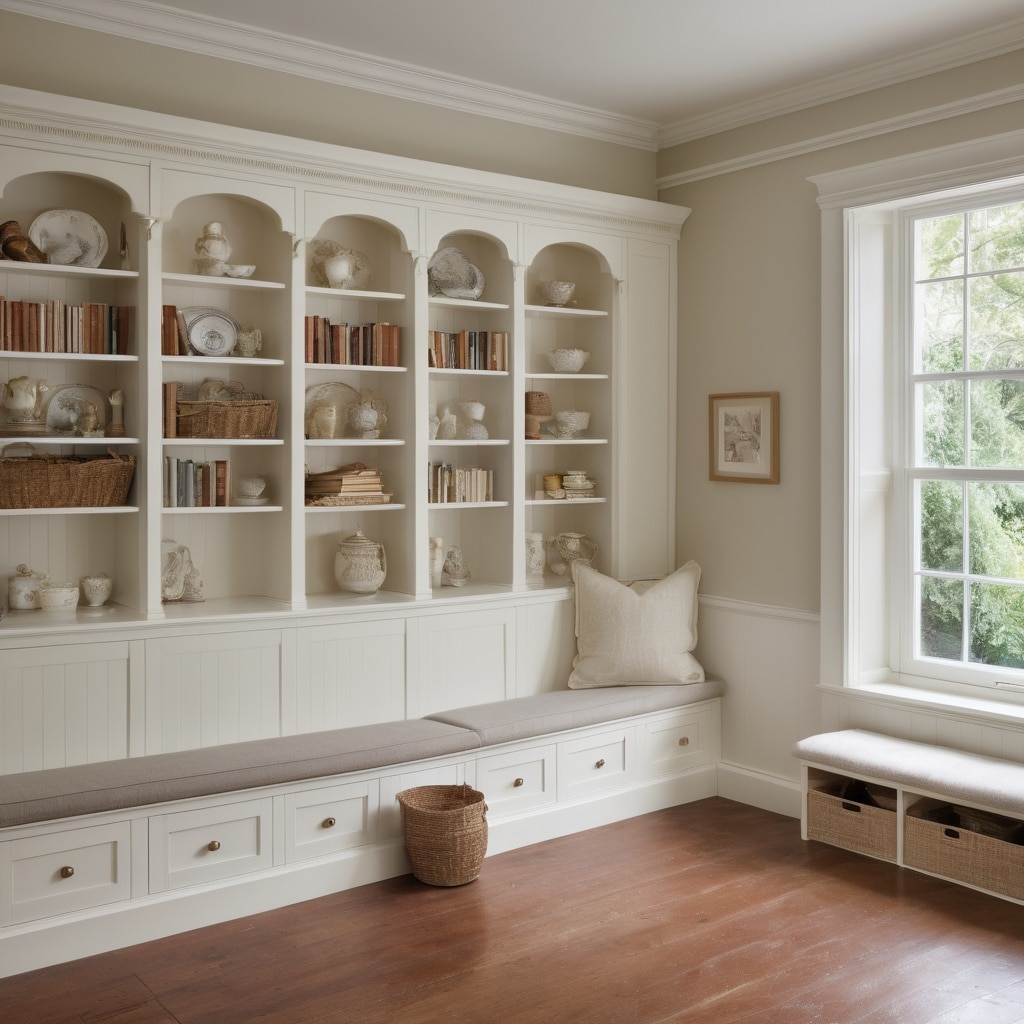
Built-in elements offer storage efficiency while adding architectural character. Even in newer homes, thoughtfully designed built-ins can create the impression of original cottage features.
Popular cottage-style built-ins include:
- Window seats with hidden storage – perfect for blankets, games, or seasonal items
- Flanking bookcases around fireplaces or windows
- Built-in corner cupboards that maximize otherwise awkward spaces
- Media cabinets designed to blend with period aesthetics
The key to convincing built-ins lies in the details. Features like beadboard backing, simple crown molding, or shaker-style doors reference traditional craftsmanship without feeling overly formal.
Hardware selection dramatically impacts the feel of built-ins. For authentic cottage style, choose:
- Aged brass cup pulls
- Simple porcelain knobs
- Hand-forged iron latches
- Wooden knobs for a more rustic interpretation
“Built-ins should feel like they’ve always been there,” explains architectural designer Gil Schafer. “The proportions and details should match the architectural period you’re referencing, even if the functionality serves modern needs.”
For homes where permanent built-ins aren’t possible, freestanding pieces that mimic built-in characteristics can create similar impact. Look for hutches, bookcases, or media cabinets with architectural details that complement your space.
VII. Defining Cottage Zones for Functionality
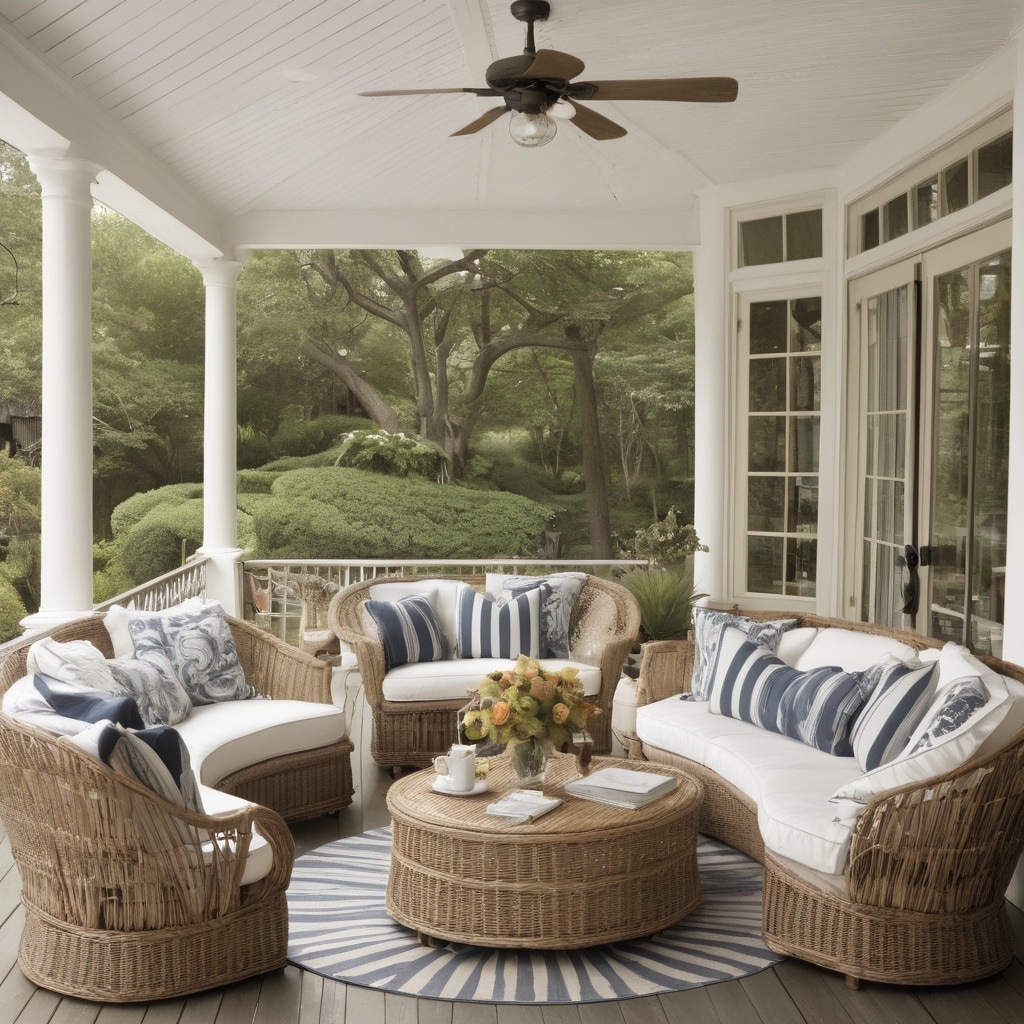
Cottage living rooms traditionally served multiple purposes – from socializing to reading to handcrafts – long before “multi-functional spaces” became a designer buzzword. Creating distinct zones helps delineate these different functions while maintaining overall cohesion.
A. Creating the Ultimate Reading Nook
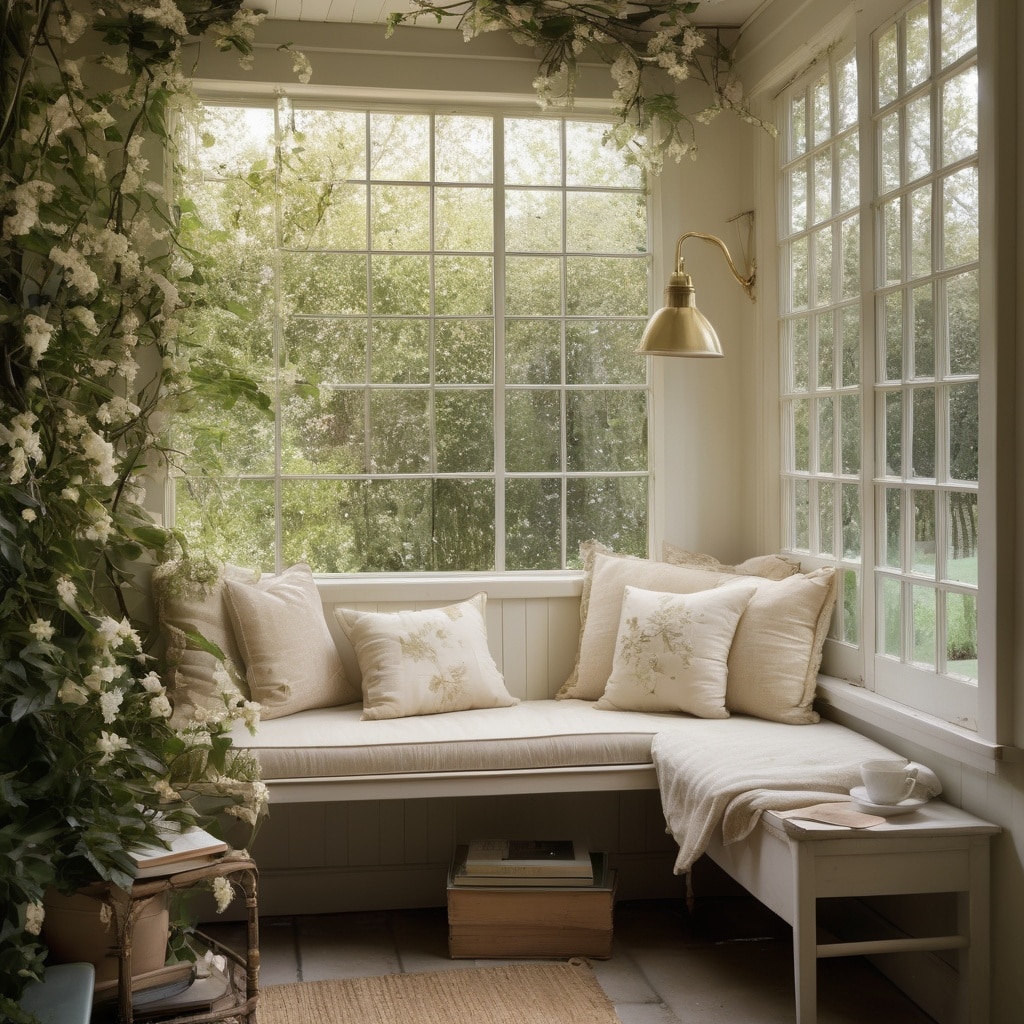
The reading nook might be the most iconic cottage living room feature, embodying the style’s emphasis on simple comforts and thoughtful design.
Essential elements for a cottage reading nook include:
- A comfortable chair with proper back support and arms at the right height for comfortable reading
- Dedicated lighting positioned to eliminate shadows on pages
- A small side table within easy reach for beverages or setting down reading materials
- A soft throw blanket for added comfort
- A footstool or ottoman that allows for proper leg support
Chair selection deserves special attention. While overstuffed chairs with attached backs and arms are popular in many cottage interpretations, designer Rita Konig suggests considering smaller-scale wingbacks or slipper chairs for space-challenged rooms: “The chair should be comfortable but not so enveloping that you’ll fall asleep before finishing a chapter.”
Natural light is ideal for reading, making window-adjacent placement perfect for daytime use. However, don’t forget to account for evening reading with proper task lighting – ideally an adjustable lamp that can be positioned directly over reading material.
For smaller living rooms, look for corners that might otherwise go unused. The area beside a fireplace, the space under a staircase, or even a deep windowsill with added cushions can be transformed into charming reading retreats.
B. Conversation Areas that Invite Connection
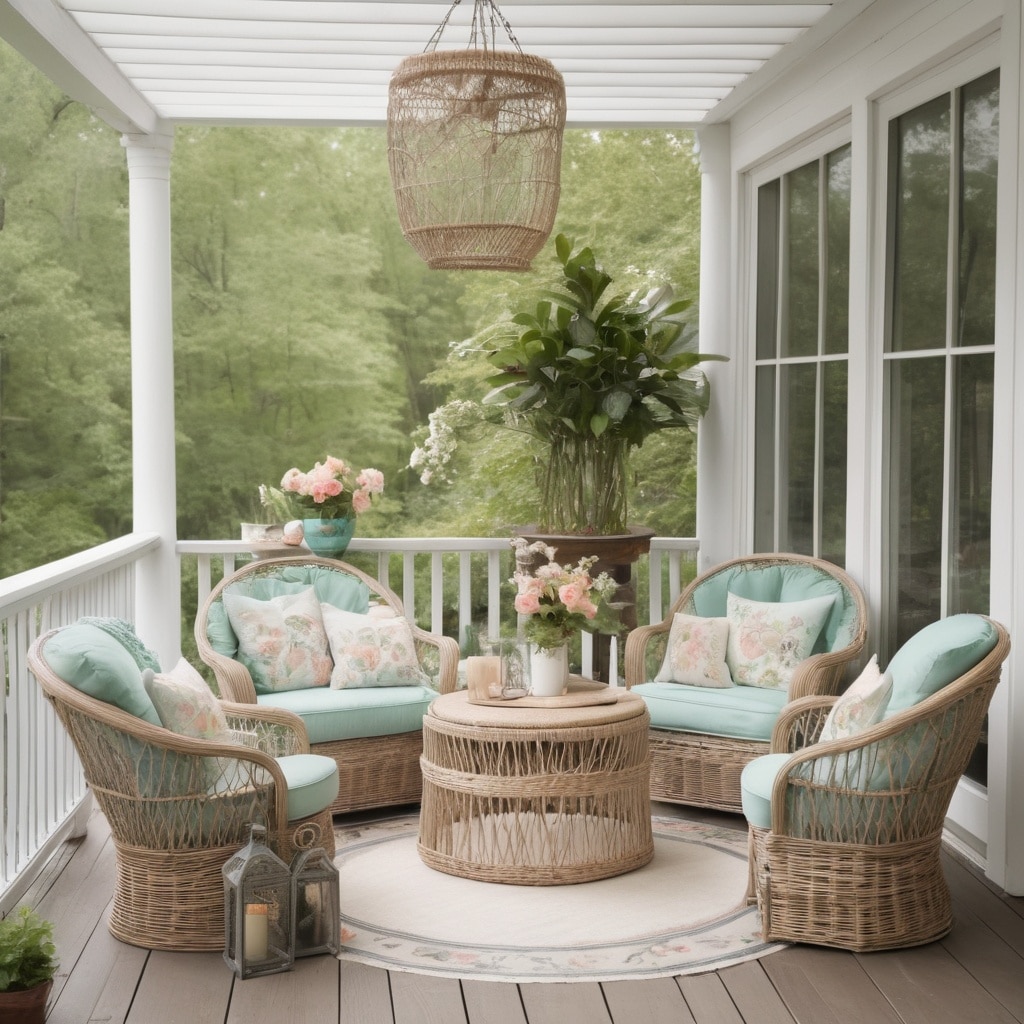
The heart of cottage living is connection – with family, friends, and visitors. Thoughtfully arranged conversation areas facilitate these connections naturally.
Unlike formal living rooms where furniture often faces a central focal point like a television, cottage conversation areas typically position seating to face each other, encouraging eye contact and interaction.
Key considerations for conversation-friendly arrangements:
- Keep seating close enough for comfortable conversation (typically no more than 8 feet between facing seats)
- Arrange seating at slight angles rather than in perfect parallel lines
- Include side tables within reach of each seat for setting down drinks
- Choose coffee tables that don’t create barriers – oval and round shapes facilitate better conversation flow than rectangular ones
- Consider seat heights – dramatic variations can make conversation awkward
Designer Max Humphrey recommends the “golden triangle” approach: “Position your three main seating pieces (typically a sofa and two chairs) so they form a rough triangle, with a coffee table in the center. This naturally creates a space where conversation can flow easily.”
For larger rooms, create multiple conversation areas rather than pushing all furniture to the perimeter. This approach is not only more visually interesting but also more practical for different types of gatherings.
VIII. Finishing Touches that Elevate the Space

The final layer of cottage design – the accessories and personal elements – transforms a well-designed room into a space that feels truly inhabited and loved.
A. Botanical Elements that Breathe Life

Plants and flowers have always been integral to cottage style, bringing the outdoors in and adding literal life to interior spaces. Beyond their aesthetic appeal, studies show indoor plants can reduce stress levels and improve air quality.
For authentic cottage style, consider:
- Ferns – Boston ferns, maidenhair ferns, and button ferns add delicate texture
- Geraniums – traditional cottage favorites available in various colors
- Herbs – functional plants like rosemary, thyme, and mint that double as cooking ingredients
- English ivy – trailing plants that add vertical interest
Container choice matters as much as plant selection. Look beyond standard plastic pots to options with cottage character:
- Weathered terracotta with natural aging
- Vintage ceramic vessels repurposed as planters
- Galvanized metal containers for farmhouse cottage style
- Woven baskets with plastic liners for a softer look
For those with limited natural light or less-than-green thumbs, high-quality faux plants have improved dramatically in recent years. Designer Shea McGee suggests: “Place real easy-care plants in prime locations, and supplement with quality faux greenery in trickier spots. The real plants lend authenticity to the entire botanical collection.”
Dried flowers and preserved botanicals offer another low-maintenance alternative with cottage appeal. Hydrangeas, lavender, eucalyptus, and cotton stems dry beautifully and can last for years with proper care.
B. Personal Collections with Purpose
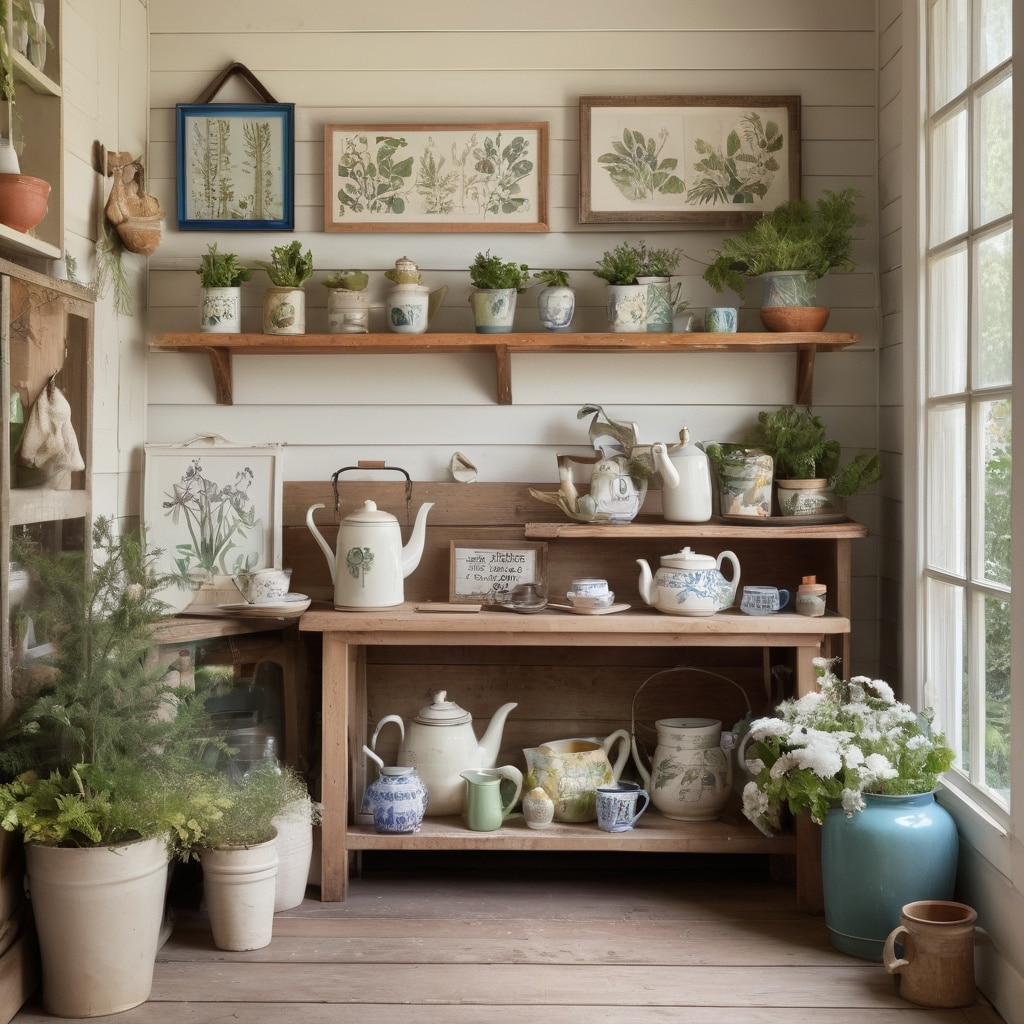
What truly distinguishes a cottage living room from a showroom is the presence of personal collections and meaningful objects. These items tell your unique story and create the layered, collected-over-time feel that defines cottage charm.
Effective display strategies include:
- Group similar items together rather than scattering them throughout the space
- Vary heights and shapes within collections for visual interest
- Leave negative space around groupings to prevent a cluttered appearance
- Rotate seasonal or special collections rather than displaying everything at once
Designer Nora Murphy suggests: “Collections should have personal meaning – whether it’s pottery you’ve gathered on travels, books that have shaped your thinking, or family photographs that tell your story. Authentic cottages are filled with things that matter, not just things that match.”
For photograph displays, consider alternatives to the standard gallery wall. Cottage-appropriate options include:
- Vintage frames clustered on a single shelf
- A collection of smaller frames on a desktop or side table
- Black and white prints in similar frames for cohesion
- Photo albums prominently displayed for browsing
Remember that negative space is as important as the objects themselves. Allow your special pieces room to breathe rather than filling every surface.
Conclusion: Creating Your Own Cottage Story
The most successful cottage living rooms aren’t rigidly styled according to design rules – they evolve organically to reflect the lives lived within them. As English decorator Nancy Lancaster famously advised: “A house ought to look as if it’s been lived in by nice people with good taste who are not trying too hard.”
The 22 ideas we’ve explored provide a framework, but the true magic of cottage style comes from personal interpretation. Your version might lean more traditional or more contemporary, more minimalist or more layered – what matters is that it feels authentically yours.
Remember that cottage style has always been adaptive and practical. Original cottages weren’t designed to impress but to shelter and nurture. They changed with the seasons and evolved with their inhabitants’ needs – your modern interpretation should do the same.
We’d love to see how you interpret these ideas in your own space. Share your cottage living room transformations with us on social media using #MyCottageStory, or comment below with questions about adapting these ideas to your specific space.
Additional Resources
For deeper exploration of cottage living room design, consider these valuable resources:
- Books: “The Cottage Bible” by Barbro Nilsson offers comprehensive history and practical advice
- Instagram accounts: @cottageandsea, @cottagesandbungalows, and @englishcottagelife provide daily inspiration
- Paint resources: Farrow & Ball’s “Traditional Neutrals” collection offers historically accurate cottage-appropriate colors
- Online courses: “Cottage Style Decoded” through Creative Live provides step-by-step guidance
Remember that true cottage style isn’t achieved overnight – it evolves naturally as you add pieces you love and adapt your space to your changing needs. Embrace the journey and enjoy the process of creating a living room that feels both timeless and uniquely yours.
